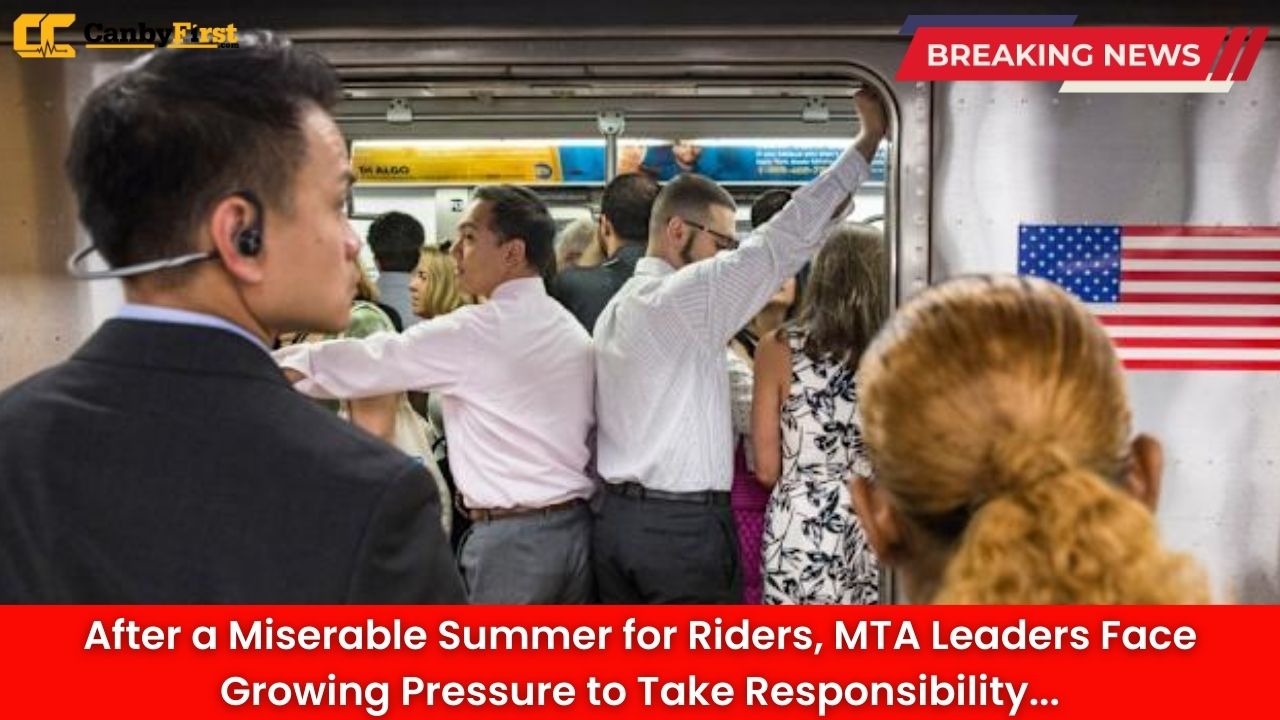New York, US: Commuters across the city endured one of the most frustrating summers in recent memory, as late trains, overcrowded platforms, and service breakdowns plagued the Metropolitan Transportation Authority (MTA). Now, with public patience wearing thin, transportation advocates and everyday riders alike are calling on MTA leadership to confront the issues head-on and stop evading responsibility.
A Commuter’s Summer of Frustration
For millions of New Yorkers who depend on the MTA every day, this summer was defined less by sunshine and festivals than by stalled trains, indefinite delays, and overcrowded cars. For some, it translated into missed work hours; for others, crowded platforms that pushed safety to the limit. The disruptions, meant to address aging infrastructure and signal upgrades, too often translated into confusion, a lack of communication, and an air of indifference from officials.
“Every day felt like rolling the dice,” said one Brooklyn commuter. “You never knew if you’d get to work on time or be stuck underground for half an hour with no explanation.”
Also Read
Leadership Under Scrutiny
Transit analysts and riders alike argue that riders are not frustrated merely because of unavoidable infrastructure challenges—after all, New Yorkers understand that major repairs take time. Instead, they are angered by what has been described as a lack of transparency and accountability from MTA leaders. Too frequently, they say, announcements have been vague, delays understated, and explanations absent.
“The core problem isn’t just track work or weather disruptions,” argued one transportation advocate. “It’s the sense that leadership is dodging instead of owning the situation. Riders deserve honesty, not spin.”
Promises vs. Reality
In recent years, MTA executives touted ambitious modernization plans, digital upgrades, and improved service reliability. But from signal malfunctions to mechanical breakdowns, many riders feel those promises have been left unfulfilled. The contrast between the rhetoric of progress and the daily grind of delays has left commuters disillusioned.
While officials celebrate milestones like upgraded signals on some lines or debuting cleaner, more modern buses, these efforts have done little to offset the sheer volume of disruptions experienced by the average rider this summer.
The Cost of Inaction
Beyond mere inconvenience, the reliability problems have real consequences for the city. Chronic lateness affects not only individual workers but businesses that rely on punctual employees. Small businesses are particularly hit when disruptions discourage customers from traveling. The ripple effect, experts warn, could dampen productivity over time and erode public faith in one of the world’s most vital transit networks.
Safety is also a concern. Crowded platforms, forced by train delays, increase the risks of accidents. Riders huddled near track edges during long waits paint a picture of what happens when overcrowding meets inconsistent service.
A Call for Transparency
What New Yorkers want most from the MTA isn’t perfection overnight, but honesty and transparency. Riders are demanding clear communication when delays occur, timely updates on expected return to service, and direct acknowledgment of shortcomings. Transit experts argue that withholding or sugarcoating information undermines public trust more than the actual delays themselves.
In fact, cities across the globe have shown that openly communicating challenges—even when inconvenient—can help earn commuter patience and cooperation. Riders understand that major overhauls take time; what they cannot accept is being left in the dark.
Riders as the Priority
To reset public trust, advocates say the MTA must reorient its focus squarely on the commuting experience. That includes addressing outdated infrastructure but also improving customer service initiatives: more reliable digital updates, stronger station staffing, and operational decisions shaped around rider convenience, not leadership optics.
The human toll of delays—lost time with families, stress during commutes, and worries about job security—cannot be dismissed as minor inconveniences. For New Yorkers who depend on the subway and buses, transit is not an optional luxury; it is the beating heart of daily life.
Looking Ahead
The fall season may bring new opportunities for MTA leadership to recalibrate priorities and restore public trust. Yet many riders are skeptical, having heard promises before. Whether the agency can turn transparency into practice—and prioritize action over rhetoric—will define not just the future of the MTA, but the daily lives of millions who rely on it.
City leaders and transit officials have reiterated their commitment to making New York’s system more reliable, modern, and rider-friendly. But for weary commuters, this summer has been a tipping point. They are no longer looking to hear what will eventually be fixed. They want to see accountability today.












